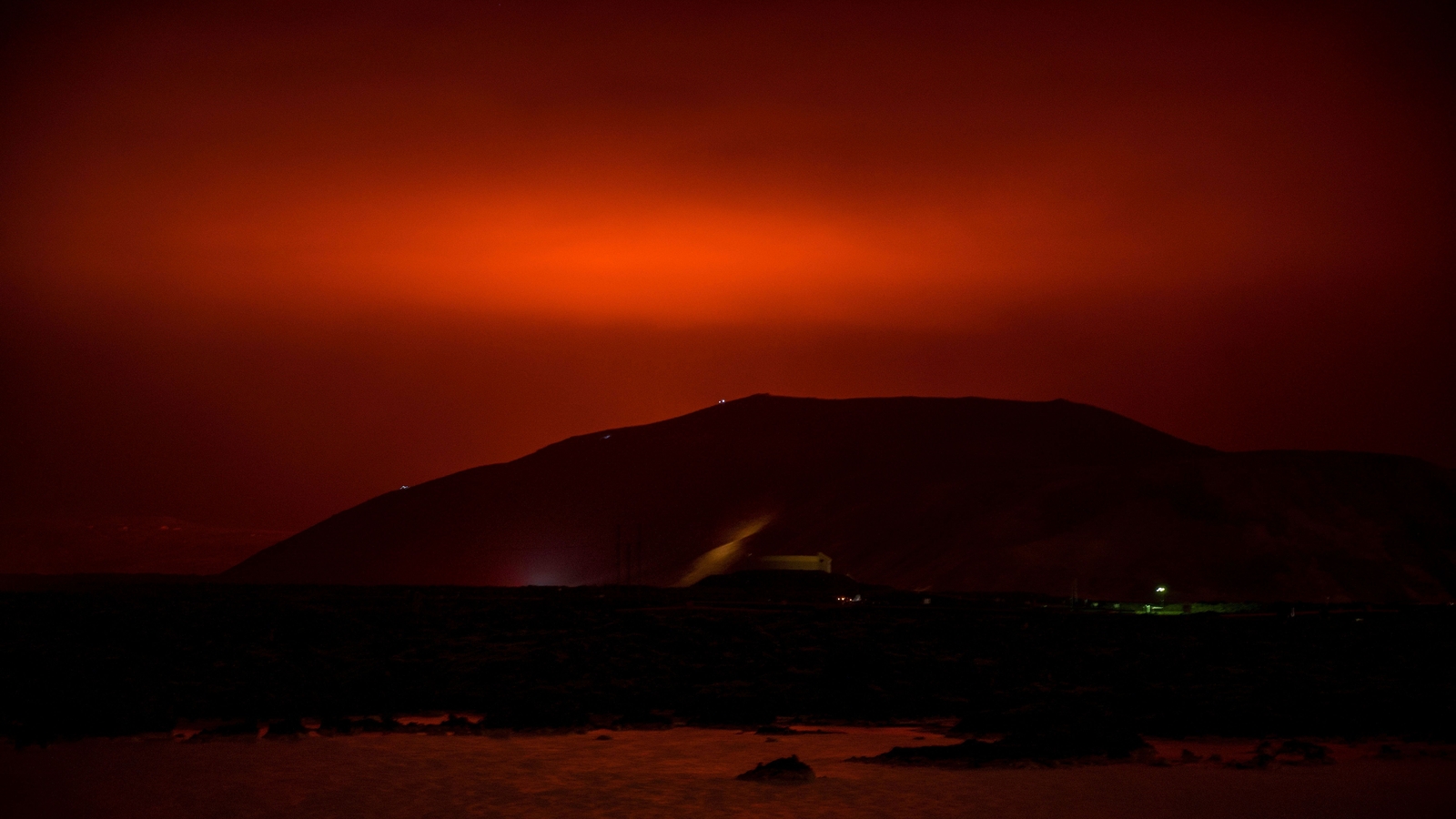
[ad_1]
A volcano erupted just 40 kilometers from Iceland’s capital Reykjavik, with red lava spewing from the ground and a crimson glow lighting up the night sky as a no-fly zone was established in the area.
“The volcanic eruption has started at Fagradalsfjall. The flight’s color code is red, but very little turbulence is seen on the seismometers,” wrote the Icelandic Meteorological Office (IMO), which monitors seismic activity, on Twitter.
Streams of red lava erupting from a fissure in the ground could be seen in video footage filmed by a coast guard helicopter and posted by IMO on its Facebook page.
“The fissure is estimated to be about 200 meters long,” the IMO wrote.
Police and coast guard agents rushed to the scene Friday night, but the public was advised to stay away from the area.
The Krysuvik volcanic system, which does not have a central volcano, is located south of Mount Fagradalsfjall on the Reykjanes Peninsula in southwest Iceland.

“The first notification was received by the Meteorological Office at 21:40 GMT. The eruption was confirmed through webcams and satellite images,” the institute said on its website.
While Iceland’s Keflavik International Airport and the small fishing port of Grindavik are only a few kilometers away, the area is uninhabited and the eruption was not expected to present any danger.
Volcanic eruptions in the region are known as effusive eruptions, where lava constantly flows out of the ground, as opposed to explosive ones that spew clouds of ash into the sky.
The Krysuvik volcanic system has been dormant for the past 900 years, according to the IMO, while the last eruption on the Reykjanes Peninsula dates back almost 800 years, to 1240.
But the region has been under increased surveillance for several weeks after a magnitude 5.7 earthquake struck on February 24 near Mount Keilir outside Reykjavik.
Since then, that earthquake has been followed by an unusual number of smaller tremors – more than 50,000, the highest number since digital recordings began in 1991.
A new video of the eruption in the Geldingardalur Valley on the Reykjanes Peninsula. Taken from the Coast Guard helicopter. #Reykjanes #Eruption #Fagradas pic.twitter.com/B862heMzQL
– Icelandic Meteorological Office – IMO (@Vedurstofan) March 19, 2021
Seismic activity has moved several kilometers to the southwest since the earthquake, concentrating around Mount Fagradalsfjall, where magma was detected just one kilometer below Earth’s surface in recent days.
Gas emissions from both types of volcanoes, especially sulfur dioxide, can rise in the immediate vicinity of an eruption and can pose a health hazard and even be fatal.
Farther afield, pollution can exceed acceptable limits depending on the winds.
The gas “can cause problems, discomfort and negative health effects,” the Icelandic Environment Agency said.
Iceland has 32 volcanic systems currently considered active, the highest number in Europe. The country has had an eruption every five years on average.
The vast island near the Arctic Circle straddles the Mid-Atlantic Ridge, a rift in the ocean floor that separates the Eurasian and North American tectonic plates.
The displacement of these plates is partly responsible for the intense volcanic activity in Iceland.
The most recent eruption was in Holuhraun, beginning in August 2014 and ending in February 2015, in the Bardarbunga volcanic system in an uninhabited area in the center of the island.
That eruption caused no major disruptions outside the immediate vicinity.
But in 2010, an eruption at the Eyjafjallajokull volcano sent huge clouds of smoke and ash into the atmosphere, disrupting air traffic for more than a week with the cancellation of more than 100,000 flights worldwide that stranded some 10 million people. passengers.
[ad_2]